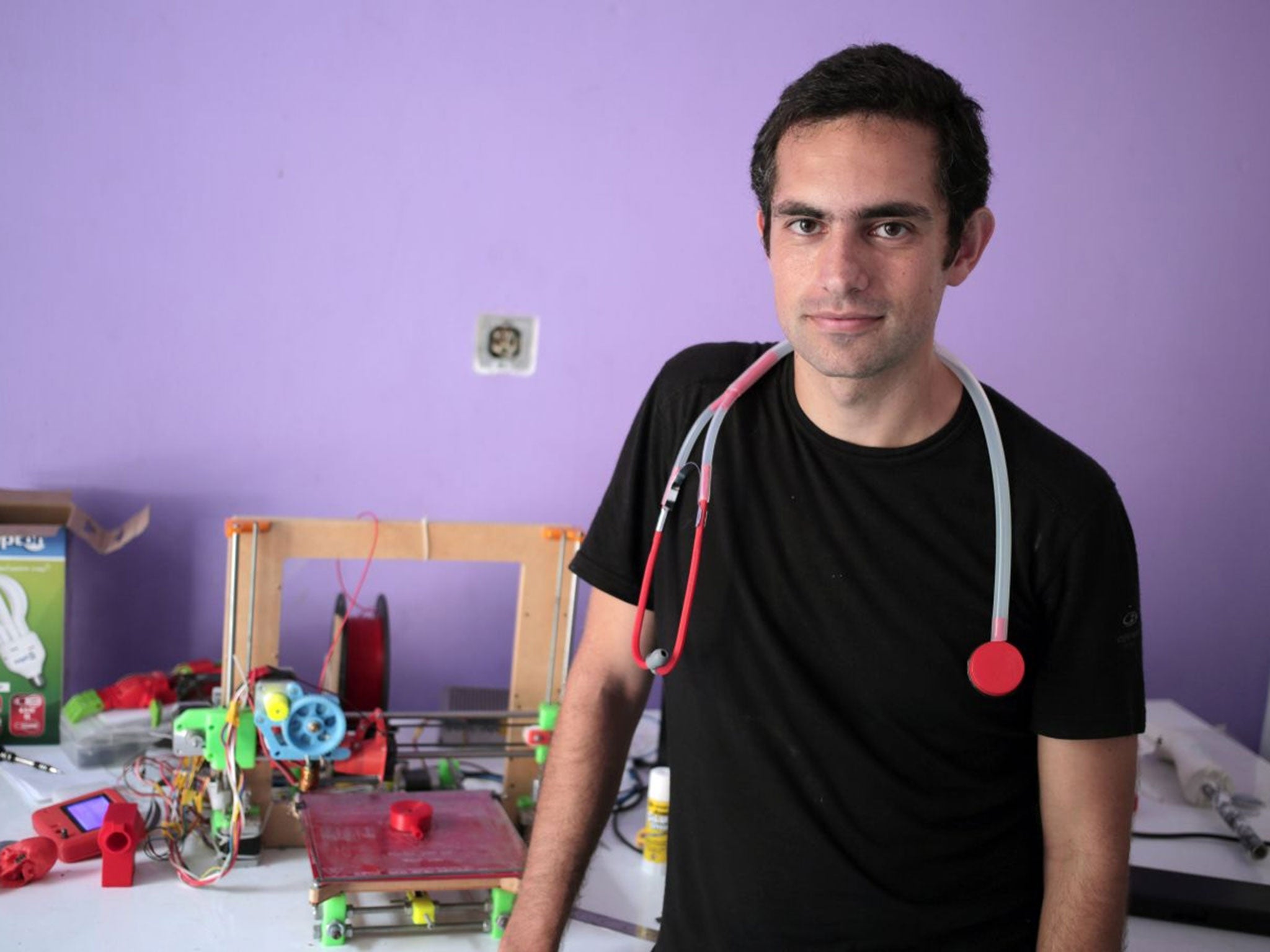Gaza doctor Tarek Loubani creates 3D printed stethoscopes to alleviate medical supply shortages caused by blockade
Tests show that the stethoscope is as effective as leading models

Your support helps us to tell the story
From reproductive rights to climate change to Big Tech, The Independent is on the ground when the story is developing. Whether it's investigating the financials of Elon Musk's pro-Trump PAC or producing our latest documentary, 'The A Word', which shines a light on the American women fighting for reproductive rights, we know how important it is to parse out the facts from the messaging.
At such a critical moment in US history, we need reporters on the ground. Your donation allows us to keep sending journalists to speak to both sides of the story.
The Independent is trusted by Americans across the entire political spectrum. And unlike many other quality news outlets, we choose not to lock Americans out of our reporting and analysis with paywalls. We believe quality journalism should be available to everyone, paid for by those who can afford it.
Your support makes all the difference.A doctor in the Gaza Strip who was faced with the fallout of an eight-year blockade in the territory has taken matters into his own hands and created a low-cost stethoscope with a 3D printer.
The crossings between Gaza and the borders of Israel and Egypt were blocked eight years ago, after Hamas seized power in the region.
The blockade has been blamed for damaging Gaza’s economy, casting its 1.8 million citizens into poverty, and creating a shortage of vital supplies.
Dr Tarek Loubani, a Palestinain-Canadian doctor from London, Ontario, was confronted with the scarcity of equipment in the region during an eight-day war between Israel and Palestinian militants in 2012, when he was working at Shifa - Gaza City’s main hospital.
The 34-year-old decided he would tackle shortages by designing his own equipment, after medics at the facility were forced to cope to with two stethoscopes as wounded Palestinians flooded into the emergency room.
The first in what he hopes will be a line of 3D-printed medical supplies produced by his open-source organisation the Glia Project, Dr Loubani said the stethoscope can be made for just $2.50 (£1.62).
Doctors who have tested out the equipment have said it is as effective as stethoscopes by leading brands, despite being a fraction of the price.
Audio tests have also shown that the Glia stethoscope was on par with the leading model on the market, the Littmann Cardiology III.
Dr Loubani said the shortage of medical supplies in the territory “is something that I think we can translate from a big problem to a big win for us in Gaza.”
He added that he plans to produce the devices locally “so they meet local need and so that they are not dependent of the political winds of the Israelis and of the donor community.”
Dr Loubani was inspired to harness 3D technology when he returned to Canada after working at Shifa. Playing with his nephew's toy stethoscope, he realised the device's ear tube might not need to be made of stainless steel.
After years of perfecting the stethoscope, Dr Loubani and his team unveiled a plastic prototype in August.
"The Glia model stethoscope is indeed a high quality instrument," said Dr Jonathan Dreyer, research director of emergency medicine at the Schulich School of Medicine and Dentistry at the University of Western Ontario.
"I have used it on many of my patients in the emergency department and can attest to the fidelity of the sound," he said, adding that it is "as good or better" than the Littmann Cardiology III.
The Glia Project is now developing designs for 3D printable surgical tools including needle drivers, used by surgeons to hold suturing needles, and pulse oximeters, used to measure the oxygen levels in a patient's blood.
Additional reporting by PA
Join our commenting forum
Join thought-provoking conversations, follow other Independent readers and see their replies
Comments